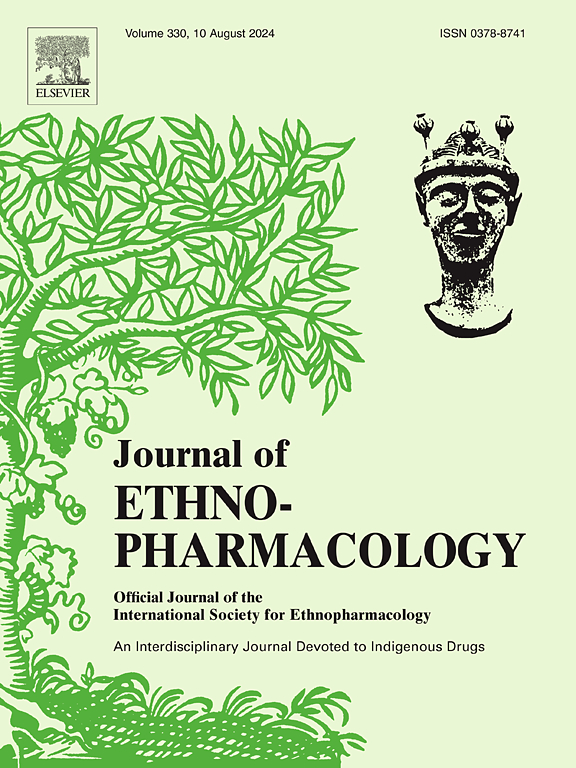Inhibition of stemness and PD-L1 expression by Pien Tze Huang enhances T cell-mediated killing of colorectal cancer
IF 4.8
2区 医学
Q1 CHEMISTRY, MEDICINAL
引用次数: 0
Abstract
Ethnopharmacological relevance
Pien Tze Huang (PZH) is a traditional medicinal formula consisted of four traditional Chinese medicines (TCMs) including Panax notoginseng (Burk.) F. H. Chen, Snake Gall, Calculus Bovis and Moschus, with clinical efficacy against Colorectal Cancer (CRC). However, the molecular and functional mechanisms underlying this efficacy are not fully elucidated.
Aims of the study
This study aimed to assess the impact of PZH on CRC cancer stem cells (CSCs), and evaluate the coordination effect of PZH on T cell-mediated anti-CRC with patient-derived autologous T cell co-culture.
Materials and methods
High-performance liquid chromatography (HPLC) was used to identify the main components of PZH. CCK8 and spheroid formation assays were conducted for assessing cell viability and stemness function. Western blot, immunofluorescence and immunohistochemistry were used to evaluate CSC markers and PD-L1 expression. T cell successful expansion was validated by flow cytometry. Co-culture assay was conducted to explore the activation effect of PZH on T cells. The potential mechanism of PZH in CRC was identified with transcriptomics sequencing and network pharmacology analysis.
Results
PZH reduced cell viability and spheroid formation ability in CRC, and suppressed the expression of CSC markers - LGR5, DCLK1, and CD133. Moreover, PZH enhanced T cell-mediated cytotoxicity against CRC cells by decreasing the expression of PD-L1. Furthermore, PZH with anti-PD-1 immunotherapy enhancing antitumor efficacy and increasing CD8+ T cell infiltration with decreasing expression of CSC markers and PD-L1. Notably, PZH inhibited CRC patient-derived organoids (PDOs) tumorigenesis and increased autologous T cell cytotoxicity against PDOs (n = 5). Consistently, PZH decreased expression of CSC markers and PD-L1 in PDOs. RNA sequencing and network pharmacology also highlighted that PZH inhibited CRC stemness and PD-L1 to enhance T cell-mediated antitumor effects.
Conclusions
PZH enhances T cell-mediated killing by inhibiting the expression of CRC stem cell markers and PD-L1, which warrant further investigation and clinical applications.

求助全文
约1分钟内获得全文
求助全文
来源期刊

Journal of ethnopharmacology
医学-全科医学与补充医学
CiteScore
10.30
自引率
5.60%
发文量
967
审稿时长
77 days
期刊介绍:
The Journal of Ethnopharmacology is dedicated to the exchange of information and understandings about people''s use of plants, fungi, animals, microorganisms and minerals and their biological and pharmacological effects based on the principles established through international conventions. Early people confronted with illness and disease, discovered a wealth of useful therapeutic agents in the plant and animal kingdoms. The empirical knowledge of these medicinal substances and their toxic potential was passed on by oral tradition and sometimes recorded in herbals and other texts on materia medica. Many valuable drugs of today (e.g., atropine, ephedrine, tubocurarine, digoxin, reserpine) came into use through the study of indigenous remedies. Chemists continue to use plant-derived drugs (e.g., morphine, taxol, physostigmine, quinidine, emetine) as prototypes in their attempts to develop more effective and less toxic medicinals.
文献相关原料
公司名称
产品信息
索莱宝
formalin
 求助内容:
求助内容: 应助结果提醒方式:
应助结果提醒方式:


